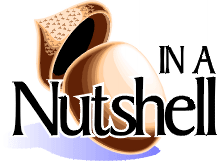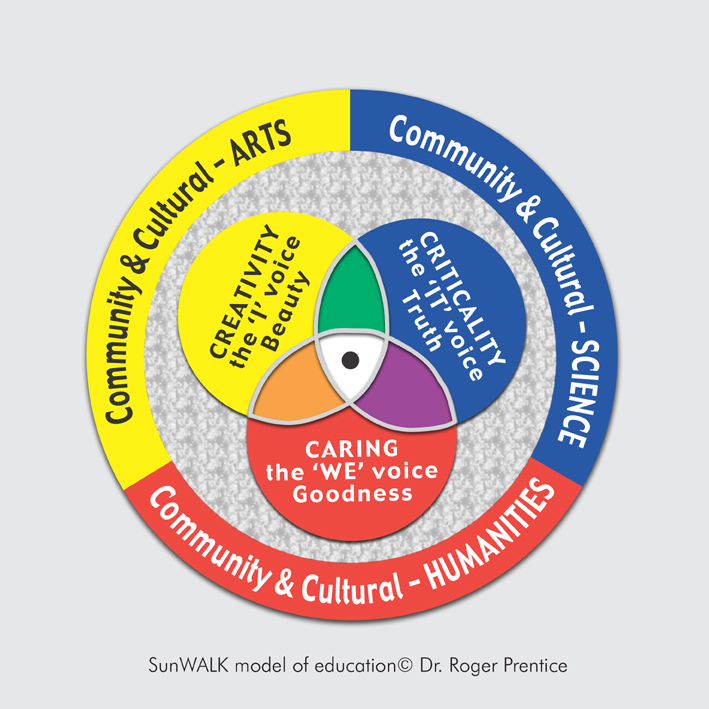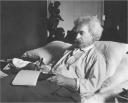Draft updated 15.11.07


Fundamentalist science and
alchemical religion:
: a holistic take on ‘Intelligent Design’ versus the ‘modern-scientific mindset’
The politico-religious movement that advocates ‘Intelligent Design’, and its rejection by some scientists, is just one of the less bloody battles going on in our world. Is there a solution to this conflict, since it plugs in to other battles that involve a great deal of blood-letting? What and how should we be teaching in schools that might help prevent or heal the conflict between ‘Intelligent Design’ and what has been called the MWM (Modern Western Mind-set)?
The ‘Intelligent design’ people make the mistake of using dubious science to promote their religious views and end up, as Karen Armstrong has said, with bad religion as well as bad science. Ill-chosen, or ‘plain wrong’, science would seem to be a fundamentalist as well as a fundamental mistake.
Unqualified literalism is seen as one of the chief destructive characteristics of fundamentalism. Another is belief in ‘textual inerrancy’. However Terry Eagleton, in Beyond Theory, has pointed out, that as soon as a text and a (subjective) human being come together the idea that a text can remain absolutely, objectively, ‘fixed’ is inevitably shattered. Each person has a unique history and each textual engagement is therefore unique. (You can only have the cultural records of previous agreements about ‘readings’). Truth and comm-unity codes then become a matter of agreement and mutuality. Of course to maintain a fundamentalist position it also helps if we switch off all critical faculties – to swallow teaching that is falsified through over-simplification, as well as by literalism.
The mystical heart of the religious can only be expressed in parable, allegory and symbol. Even if required actions are crystal clear – be loving, be good etc. When religion falls to fundamentalist levels there is – in effect – no longer the need for the individual to be a responsible, autonomous human being. In such a case we can relieve ourselves of the burden of self, not through transcendent experience, but through the capitulation of obedience to an imposed, fixed, interpretation. Then religion is as false as the promise, and premises, of alchemy.
On the other hand scientists, when they also happen to be materialists, only value one kind of knowing – the rational-empirical. They invalidate other ways of knowing – rather as women have been invalidated throughout history. Might there might be a connection here?
Extreme denial of other ways of truth-telling by those who have turned the MWM into a creed can be as fundamentalist as religious extremism. Materialistic scientists, and other MWM de-valuers, need to open up to respecting the positives that can flow from other ways of knowing.
What can help toward a solution? Karen Armstrong, most recently in her A Short History of Myth has argued for a re-balancing through a modernised form of mythos to counter-balance the current form of logos. Mythos is not just a matter of myth, as detractors like to argue. The origin of ‘mythos’ relates it to speech, narrative, plot, or dialogue. I would also see it as closer to ‘heart-knowing’, to the imagistic and the ‘gestaltic’. It is a mode of knowing that flows from apprehension of the whole with a subsequent moving toward the particular.
It would be good to have the two, or more, ways of knowing validated and seen as complementary. On the head-knowing and heart-knowing front there might be useful correlations with left-right hemisphere brain functioning – but only if you get the philosophy and the science in good balance!
Instead of complementariness gradually, in the MWM since the Age of Enlightenment, the only valued, and therefore the only valid, way of thinking has come to be a matter of starting, proceeding and ending, in measurable ‘bits’. But being human is always far more than what can usefully be measured. This monopolism rightly upsets ‘good’ religionists as well as extremists – so much so that they mistakenly reach for bits of science.
Before the MWM became a monopoly, in the West, ‘the whole’ had value complementary to knowledge of parts. The ‘ology’ of biology, zoology and geology was the whole – in relation to the particulars of ‘bio’, ‘zoo’ and ‘geo’. It accepted as we do that the ‘ology’, the whole, is always more than we can comprehend, but humility like mutual respect is in short supply. To re-new this lost balance requires first a re-legitimization of a modernised understanding of mythos. It is true that literature, film and the plastic and performing arts have kept us spiritually connected to the mythic but the language to re-factor mythos into our various discourses has to be re-discovered.
Were we to have legitimated forms of mythos and logos, the arts and religion, on the one hand and science-reason-logic on the other hand could then be explored in many kinds of complementary relationship. Mythos and logos, the arts and sciences, characterise two ways of truth-discovery as well as truth-telling.
The third way to truth is a matter of agreements. A community’s agreements, and our internalization of those agreements as conscience and moral sensibility, is the third voice, the moral. All three are ways to enable us to engage in reality.
Truth and reality might usefully be seen as one but it is vital that truth-telling be seen as multiple. When truth-telling is seen as being of three kinds (at least) the two camps have a way to unite. Ken Wilber has called these three the I, WE and IT ways of knowing truth and reality.
The ‘I voice’ of the arts speaks of reality perceived via subjective truth-telling. It, of course, often uses mythos, symbol, allegory and metaphor.
The ‘WE voice’ of the humanities, speak about the moral aspects of reality via what we might call ‘community truth’. ‘Community truth’ is, of course, negotiated according to the society’s political structure. In academe religion is often classed as one of the humanities.
The ‘IT voice’ of the sciences uses the objective truth-telling of empirical methods. But we are always more than we can usefully measure.
Philosophy which used to combine all truth-telling voices, and from which the ‘fragmentation’ of subjects sprang is all but lost. Matthew Lipman, the developer of ‘Philosophy for Children’, sees the restoration of philosophy as the means to restore wholeness. I prefer to add the contemplative and transcendent as well. Philosophy starts with “I wonder”; the mystical with just “wonder”.
If religion has a purpose it is to generate spirituality. If spirituality has a purpose it is to convert good feeling into good action. If religion doesn’t lead to justice, truth, beauty and goodness, etc., we are better off without it.
Religion however is in some ways closer to art than to the humanities. The ‘studying about’ versus ‘studying in’ distinction is vital here. Spiritual and moral competency comes through ‘practice and action’ not just through academic knowledge. But religion, or at least first hand religious experience – John Hick’s definition of the mystical – can only, like art, be subjective. Ideally it is universal enough to be agreed upon, agreement being necessary in all knowing/ knowledge as Wittgenstein pointed out. This is why common ground needs to be established, and expanded, and ‘perennial philosophy’ re-looked at. However we can I believe agree only on our human predicament – we all love, hope, need security etc. We can go a bit further with recognizing matters of justice, truth, beauty and goodness, but theology is (rightly) too subjective. Academic theology is often just a version of bean-counting.
In education the experiential is vital; doing religion, or at least spirituality, is just as important as learning about religions. If the violent possessiveness and exclusiveness that many people of religion feel could be eased then a pan-religious, meta-religious spirituality could be developed – without denying others their beliefs. In such a ‘non specific-faith-group’ form of spirituality the widening and deepening of consciousness might have a chance. A sense of reverence, a sense of the sacred, a sense of transcendence might then be part of all children’s entitlement Qualities such as respect and humility, that can help inoculate against such negatives as racism, might then thrive a bit more. We can’t go on forever relying on David Beckham and Thierry Henri to band-aid a bad situation.
All truth systems only provide degrees of certainty. Demanding scientific certainty of the metaphysical is dangerous – usually to others as minorities – as well as plain impossible to achieve. The ‘healthy doubt’ is vital not just to enable respect for others but to prevent our own excesses. Absolute certainty requires a ‘narrowing of the hearteries’ as well as a closing of the mind. It also prevents humility.
The ‘IT voice’ of the sciences uses reason and the empirical to reveal reality via objective truth. But isn’t the overbearing assertion that this, and only this, has human value just as fundamentalist as Christian or Islamic extremists? Deifying science and reason can lose us the better part of our humanity. Debasing religion has the same effect.
All three truth-telling voices need to be validated through working with each other and by avoiding making claims from the ground and viewpoint of each other. Religion that pretends to be scientific can end up in an embarrassment of scientism. However each way of knowing can inspire and support the others.
In the case of religion and beliefs the proof is always in the pudding. Personally I don’t care what a person believes so long as it leads to virtuous action – to the ‘I WE and IT voices’ manifested in the world as some expression of beauty, goodness or truth all conditioned internally as well as externally by the spirit of justice.
Can extremist-fundamentalist mindset ever be transformed – its in virtually every religion? I saw a flicker of hope on an edition of The Daily Show. Jon Stewart interviewed an ex- fundamentalist, Bart Ehrman, who had been converted to having an open mind! Although the show’s large audience may well believe that Stewart’s satire get’s nearer truth than ‘straight’ news programmes – (is that an I, WE or IT voice?) – Stewart gave Ehrman a largely admiring and straight interview.
Ehrman was an evangelical Episcopalian (see http://www.publishersweekly.com/article/CA6301707.html ) but through serious studies of the Bible shifted to a ‘happy agnostic’ because of what he found – that the Bible, far from guaranteeing inerrant comfort for the literalist, was a ‘living document’ derived from an almost limitless number of changes effected by copiers of texts down through the ages. His book Misquoting Jesus has become a best seller. It is not clear whether he has received any death threats – or faeces.
The poison of religious hatred can only be overcome step by step, perhaps person by person. Education is vital to such a healing. We could all help in making clear the ideas that separate out the roles of Wilber’s ‘I, WE and IT’ voices.
Shouldn’t we teach these basic different kinds of ‘truth-telling and truth investigation’ ideas in every school? Better still shouldn’t they be a way of teaching in every school? As someone interested in holistic education I see the need not just for the theoretical acceptance of other ways of knowing but also for the praxis that enables them to be combined in discourse by all teachers of all subjects.
In my own teaching in schools I found that using the three voices in ‘creative dialogue’ within the subject discourse of English, and Philosophy for Children, a produced amazing results in pupil performance. A fuller account of this way of teaching is at https://sunwalked.wordpress.com/
There just remains the task of persuading the two camps and, oh yes, HM Government and its TTA.
Dr Roger Prentice
Email: rogerprentice AT bigfoot.com
—–0—–
All postings to this site relate to the central model in the PhD. Summaries are HERE




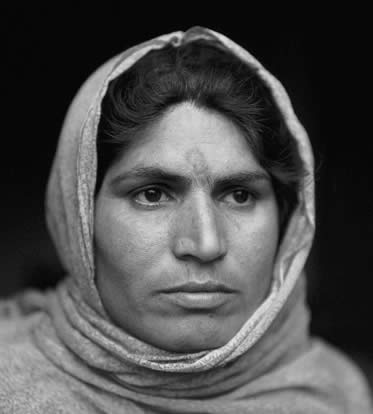
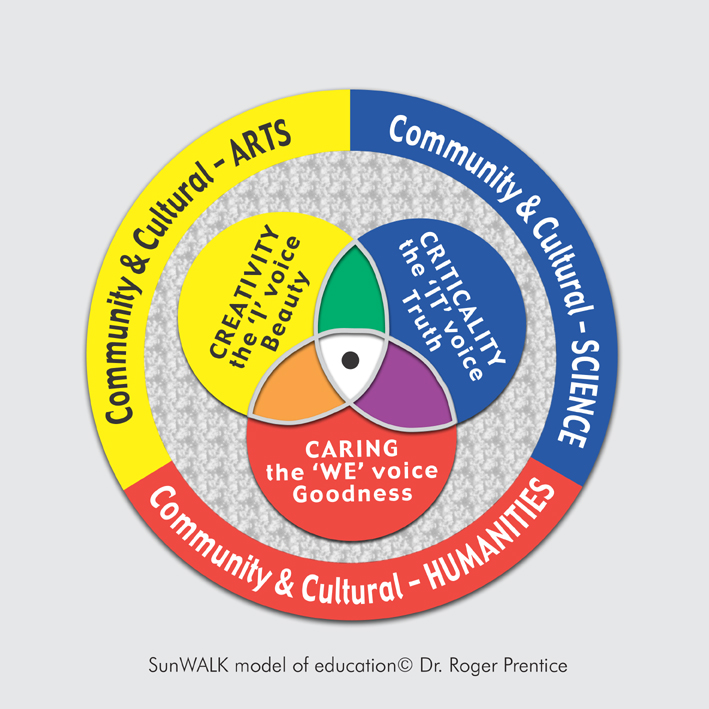

 ‘Bush faces of the Dead – Source and a PoMo (Postmodern) primer
‘Bush faces of the Dead – Source and a PoMo (Postmodern) primer



 Source – and lyrics for the Freewheelin’ Bob Dylan
Source – and lyrics for the Freewheelin’ Bob Dylan



